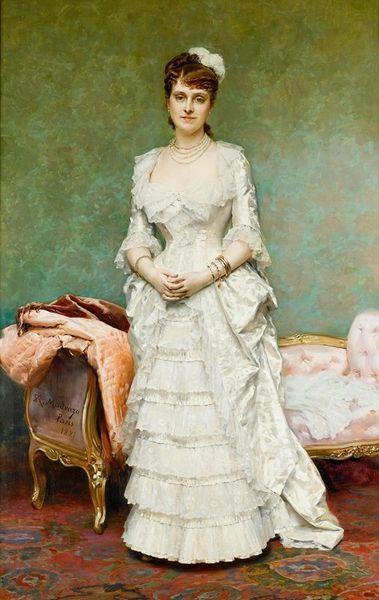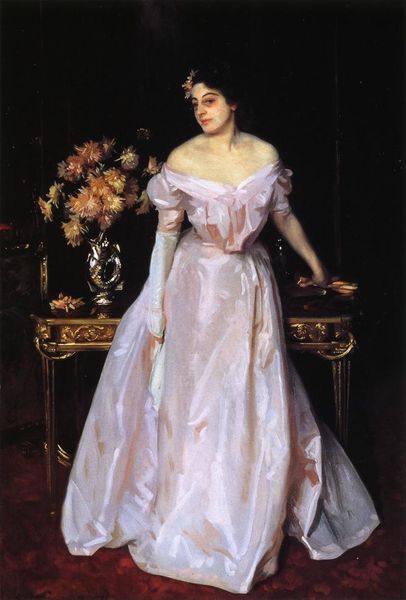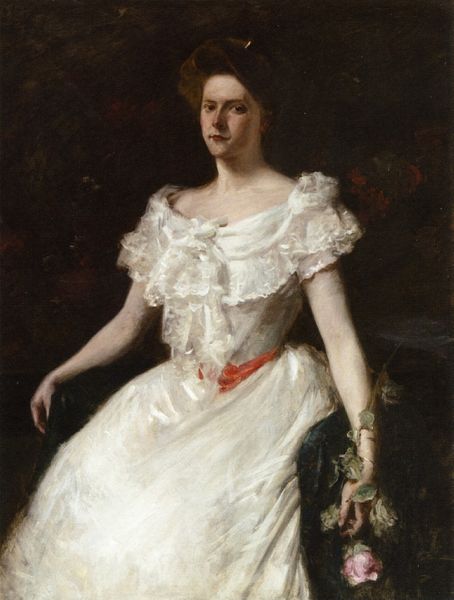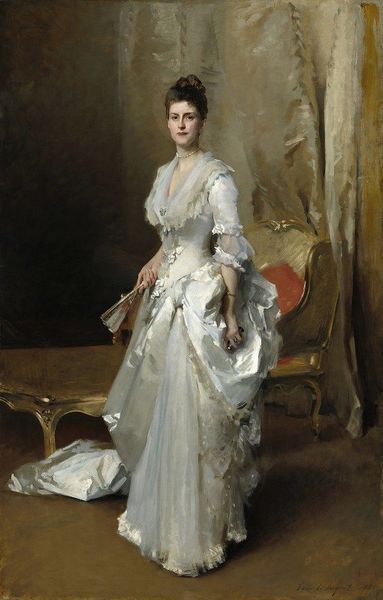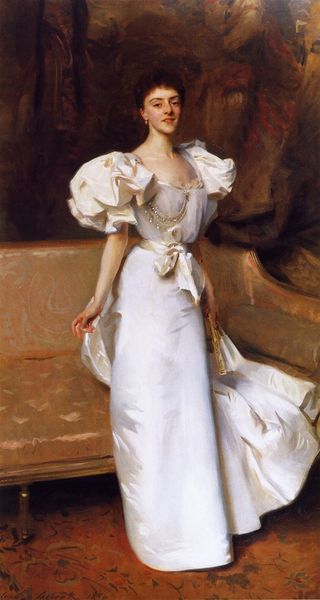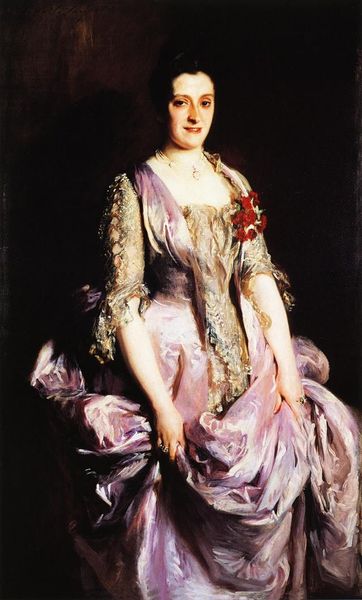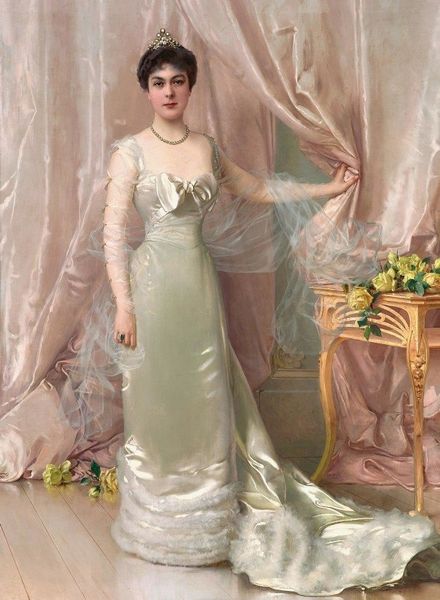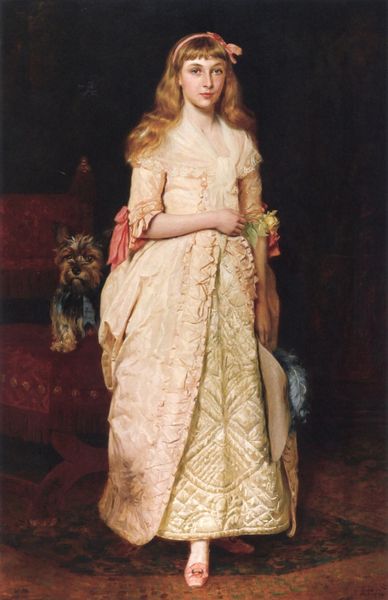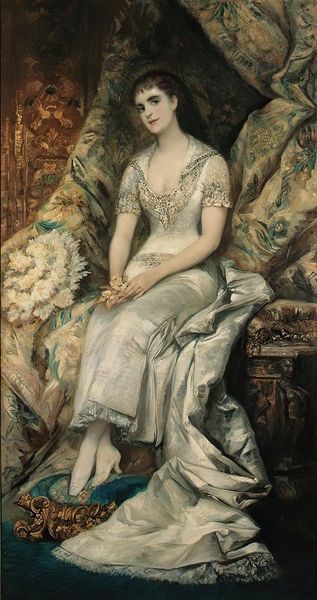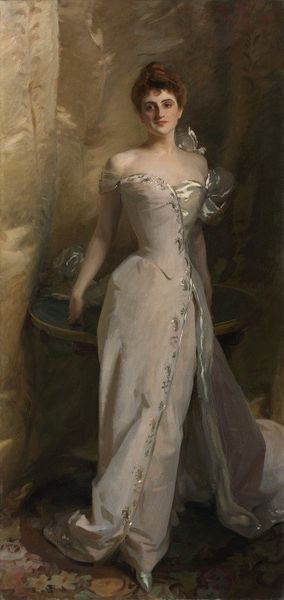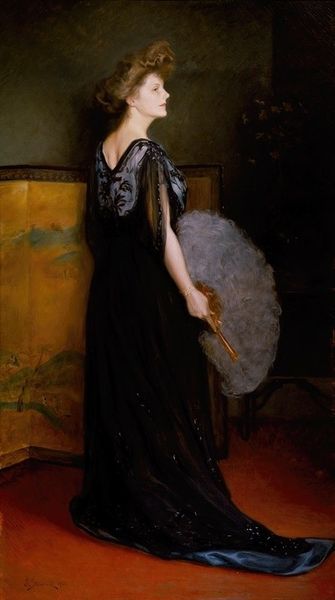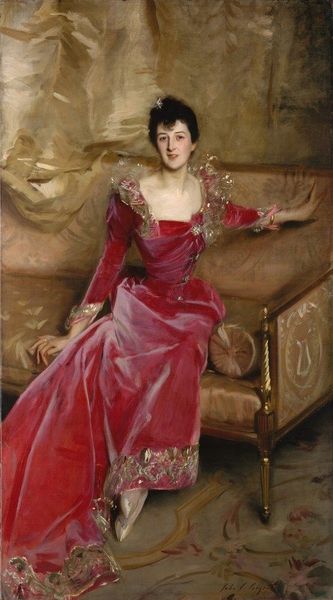
painting, oil-paint
#
portrait
#
figurative
#
painting
#
impressionism
#
oil-paint
#
genre-painting
#
history-painting
#
academic-art
#
realism
Copyright: Public Domain: Artvee
Curator: Let’s take a closer look at Carolus-Duran’s 1875 painting, "Portrait de mademoiselle X, Marquise Anforti." Editor: Striking! The immediate impression is one of restrained opulence. The cool silvery tones and the Marquise's composed expression suggest a careful construction of image and power. Curator: Indeed. It reflects the artistic currents of its time. Carolus-Duran was a sought-after portraitist known for his ability to blend Realism with the elegance and grandeur expected of academic painting. He captured the likenesses of prominent figures of the French Third Republic, embedding his sitters in the narrative of the period. Editor: Her gown really exemplifies this moment, doesn't it? All those delicate embellishments and textures suggesting high status and wealth in a society where appearance was paramount. What’s particularly interesting, and perhaps Duran's genius, is how she avoids feeling entirely frivolous. Curator: I agree. There’s an element of Realism, yes, in how he renders the details of the dress, the fabric’s fall, and even her somewhat severe hairstyle. It’s a contrast between the outward display and the internal… stoicism, perhaps? The symbolism here speaks to the social expectations placed on women of her rank: to be both ornamental and restrained, powerful, yet yielding. The pose itself, slightly formal, suggests control, and even a hint of defiance. She’s not just an object of beauty, she’s an individual. Editor: And this duality, so well captured, is precisely what makes the portrait compelling even now. It’s not just a picture of a beautiful woman in a fancy dress, but a nuanced commentary on gender, class, and the gaze itself. The muted palette enhances this sense of considered strength. Curator: It is interesting to consider the painting’s place in the history of portraiture—Carolus-Duran skillfully captured a sense of societal flux, moving away from pure idealized representation. He uses a more naturalistic style that offers an intimate glimpse into the sitter’s personality within the bounds of formal portraiture. Editor: Absolutely. It becomes less a symbol of immutable power and more of an impression of a person navigating her place in society. Something subtle, yet profoundly potent.
Comments
No comments
Be the first to comment and join the conversation on the ultimate creative platform.
